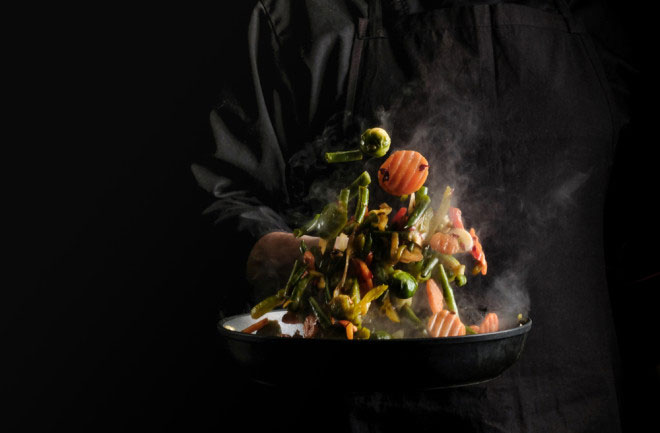Cooking affects indoor air quality in complex ways, and the best method to stay safe is to use effective ventilation.
Stephanie Holm’s daughter found a cake recipe on the internet and the two started making them in the kitchen. Together they mixed the dough, rolled it out, put the cookies on the pan and put them in the oven. Holm is an environmental medicine specialist in San Francisco (USA).
However, when the cookies were in the oven, Holm noticed that the sugar coating was burnt. Then she noticed that the indoor air quality sensor turned from green (good air quality) to purple (very unhealthy).
It’s not uncommon for Holm’s cookies to happen. All cooking releases a complex mixture of chemicals, some of which are classified as unhealthy pollutants. So is cooking dangerous for health? The answer is that it depends on many factors, but in general, if there is good ventilation in the house, everything is fine.
Delphine Farmer, an atmospheric chemist at Colorado State University, thinks that cooking releases a mixture of hundreds of different chemical compounds into the air. Each ingredient creates a unique blend of particles and gases. The protein in the meat breaks down and produces ammonia. Roasting food can produce isocyanates. Oil from frying and pan frying can evaporate. The molecules in the air can continue to react and change as they fly around the kitchen and collide with each other.
“You can see some really interesting compounds in the cooking process,” Farmet said. However, whether they are at a toxic level is difficult to explain and answer’.
Part of the uncertainty when it comes to the health effects of cooking is that most air quality studies and standards are based on outdoor air measurements, even though humans spend up to 90% time indoors. While Canada and the World Health Organization (WHO) have guidelines for indoor air quality, the United States and many other parts of the world do not.
In Holm’s experience, certain activities such as cooking and cleaning can cause dramatic changes to indoor air quality. Contamination levels will spike in the kitchen while cooking is in progress. However, Holm also said that there is currently no data on how cooking affects human health.
It is not easy to obtain data on whether cooking affects air quality or not. Variables that can affect cooking smoke include what we cook, how we cook, the type of equipment used, the type of ventilation, the type of pots and pans…
Particulate matter when cooking
The main pollutant of concern related to cooking is particulate matter. The term refers to complex mixtures of microscopic solids and ultrafine liquid droplets that can be made up of hundreds of different chemical compounds. Particles smaller than 10 microns (less than one-fifth the width of a human hair) can enter the lungs and settle there. Even smaller particles can enter the bloodstream.
Particulate matter is also the reason you don’t want to breathe smoke. Holm says chronic exposure to particulate matter aggravates asthma and can also predispose children to asthma. It is also implicated in changes in growth, metabolism, and brain development in childhood. At the same time, it is also classified as a carcinogen by WHO.
All cooking activities produce some particulate matter in the form of gases. If you can smell burning while cooking, you’re probably breathing in a lot of particulate matter. Iain Walker, an engineer at the US Lawrence Berkeley National Laboratory, said that baking and frying produces more particulate matter than boiling or steaming, and that high-fat foods also produce more particulate matter than vegetables. blue.
Gas stoves are especially bad for indoor air quality. Not only do they produce more particulate matter, but the actual combustion of fossil fuels also produces other gases, such as carbon dioxide and nitrogen dioxide. In particular, nitrogen dioxide like particulate matter contributes to respiratory problems such as asthma. The gas has also been linked to heart problems and reduced life expectancy with chronic exposure.
A 2016 study from the Lawrence Berkeley National Laboratory found that simply boiling water on a gas stove produces nearly twice as much nitrogen dioxide as the outdoor standard.


